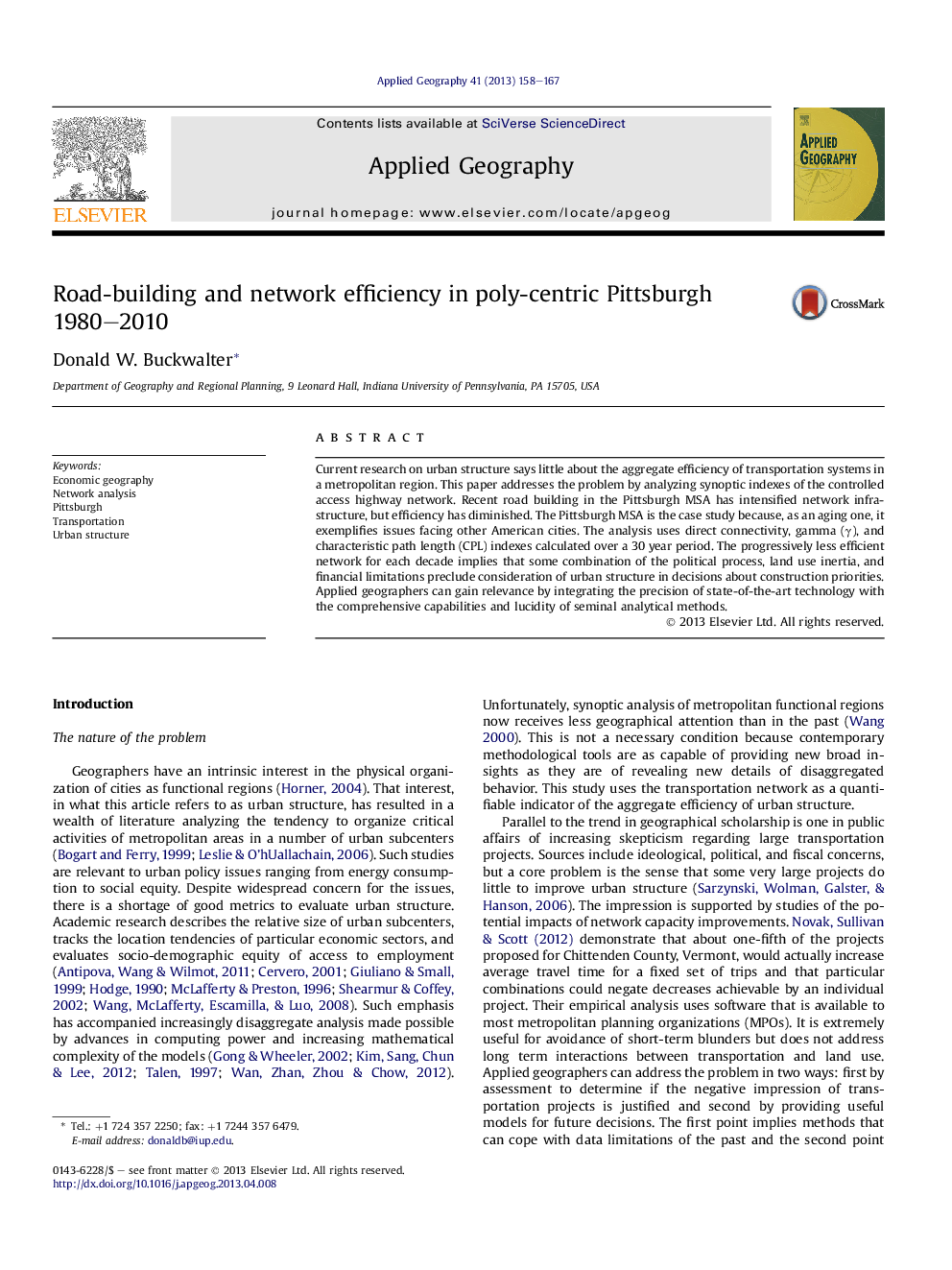| Article ID | Journal | Published Year | Pages | File Type |
|---|---|---|---|---|
| 83254 | Applied Geography | 2013 | 10 Pages |
•Seminal indexes yield useful synoptic evaluation of transportation projects.•Recent road building has decreased gamma index values and increased characteristic path length in the Pittsburgh metropolitan area.•The Central Business District (CBD) trails other urban subcenters in accessibility.•Some highway nodes coincide with employment subcenters and some do not.
Current research on urban structure says little about the aggregate efficiency of transportation systems in a metropolitan region. This paper addresses the problem by analyzing synoptic indexes of the controlled access highway network. Recent road building in the Pittsburgh MSA has intensified network infrastructure, but efficiency has diminished. The Pittsburgh MSA is the case study because, as an aging one, it exemplifies issues facing other American cities. The analysis uses direct connectivity, gamma (γ), and characteristic path length (CPL) indexes calculated over a 30 year period. The progressively less efficient network for each decade implies that some combination of the political process, land use inertia, and financial limitations preclude consideration of urban structure in decisions about construction priorities. Applied geographers can gain relevance by integrating the precision of state-of-the-art technology with the comprehensive capabilities and lucidity of seminal analytical methods.
